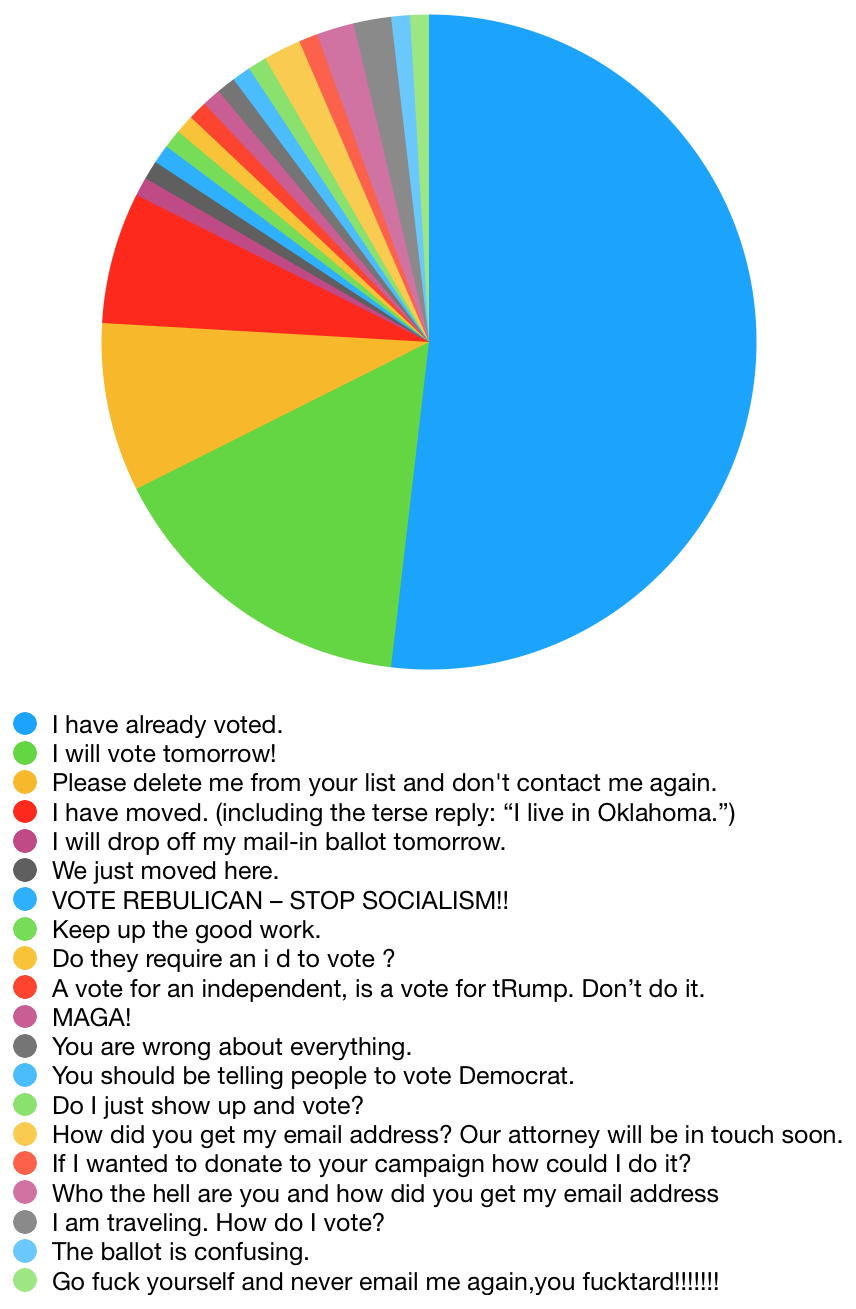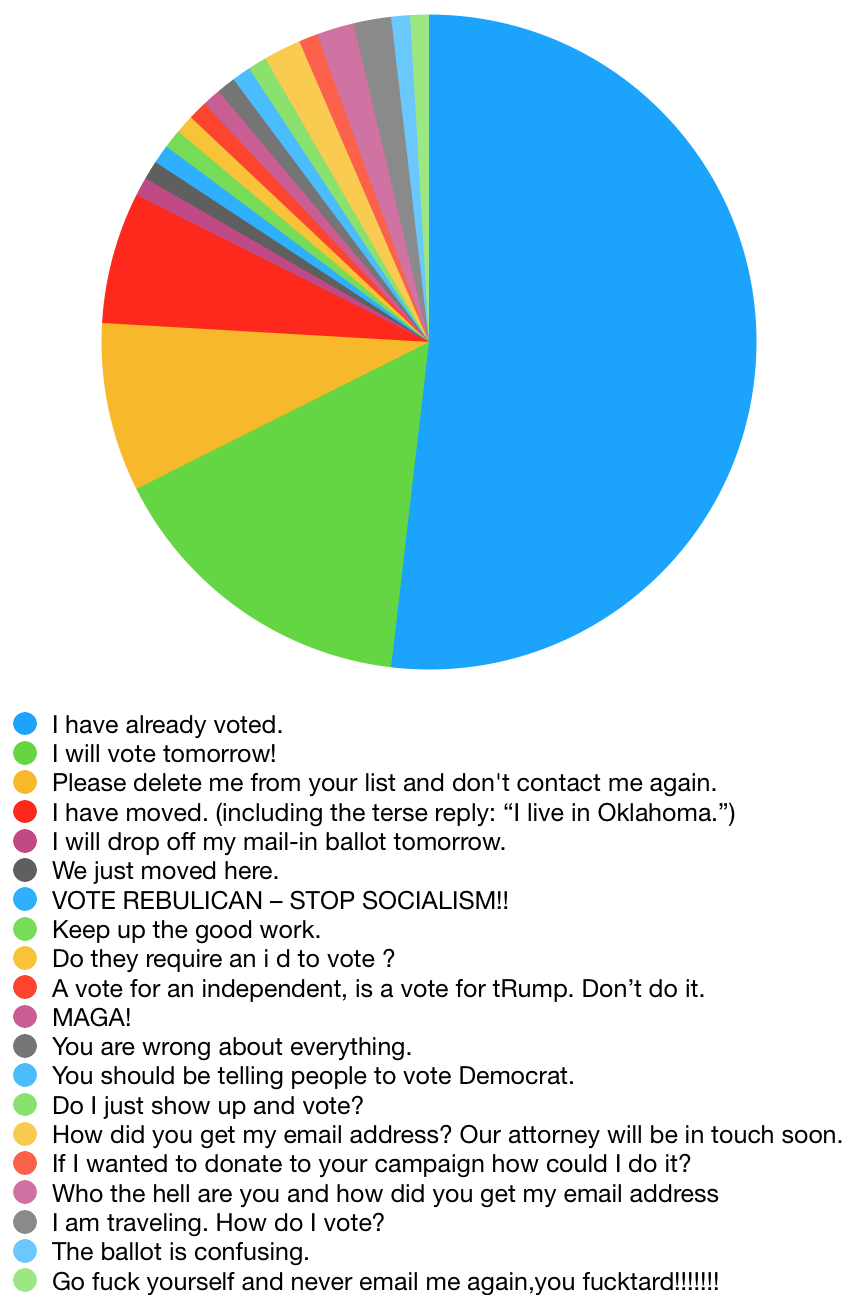Poking around more with the Florida voter data, I found that of the over 13 million active registered voters in Florida, 2,254,591 of them have no history of ever having voted. 162,883 of those who have no history of ever having voted have recorded an email address when registering to vote. On Monday, November 5th, 2018, I sent them all an email asking them to vote the next day in the 2018 primary midterm elections if they had not already early voted or voted by absentee ballot.
Some lessons learned and responses I received:
- The data from the state is a mess. There are lots of typos in the email addresses. Some of the bad email addresses look like they might be a result of OCR failures. If I do something with voter email addresses again, I should run it through some simple transformations (e.g., “person@gmail.cim” should be “person@gmail.com”).
- A few people responded that they had moved out of Florida.
- Many people have responded positively. The few who have responded negatively to me via email have troubles with spelling, grammar, understanding how public records work, and the limitations of the CAN-SPAM Act. The positive encouraging responses far outnumbered the angry negative responses.
- Two people told me that I had changed their minds and convinced them to vote when they had already decided not to participate.
- Several people responded that they have voted in several Florida elections. I see none of those votes in the history. I am wondering if the history data is incomplete. I am going to have to investigate this further.
- A disturbingly large number of respondents do not understand how voting works.
- Some were out of the country and asking if they could vote by email or absentee ballot the day before the election.
- One person asked if it was necessary to have an ID card.
- One person said that he would be dropping off his mail-in ballot. (I don’t think it works that way. [Update: I was corrected on this. You can drop off a ballot. I had assumed one had to go through the regular process if the ballot had not been received via USPS.])
- Some people asked if they could just show up and vote. I responded with an enthusiastic yes and pointed out that they must already by registered as I have their data.
- Two people asked how to donate to my campaign. I am still trying to wrap my head around this. I do not know if I did not make it clear enough in my message that I am not running for office or if they thought I should run for office.
- A depressing number of respondents affirmed that not only had they already voted, they had voted entirely for a single party without apparent evaluation of the merits of the candidates.
- My mail server infrastructure did fine sending such a big burst. It did however consume lots of CPU while performing spam filtering analysis of incoming bounces for hours afterward. This delayed incoming email.
- I expected that I might end up on spam blocklists. In general, this did not happen. What did happen is that it appears that Gmail flagged my domain for sending to lots of invalid addresses and that gave my domain a bad reputation, preventing me from emailing Gmail afterward. I suspect a lot of potential Gmail recipients never got the letter. I had to fix my domain with Gmail. If I do something like this again, I will use proper mailing list infrastructure. This was really just an impulse decision for me, so I did not have any infrastructure in place.
I have summarized the responses I received with a graph:

